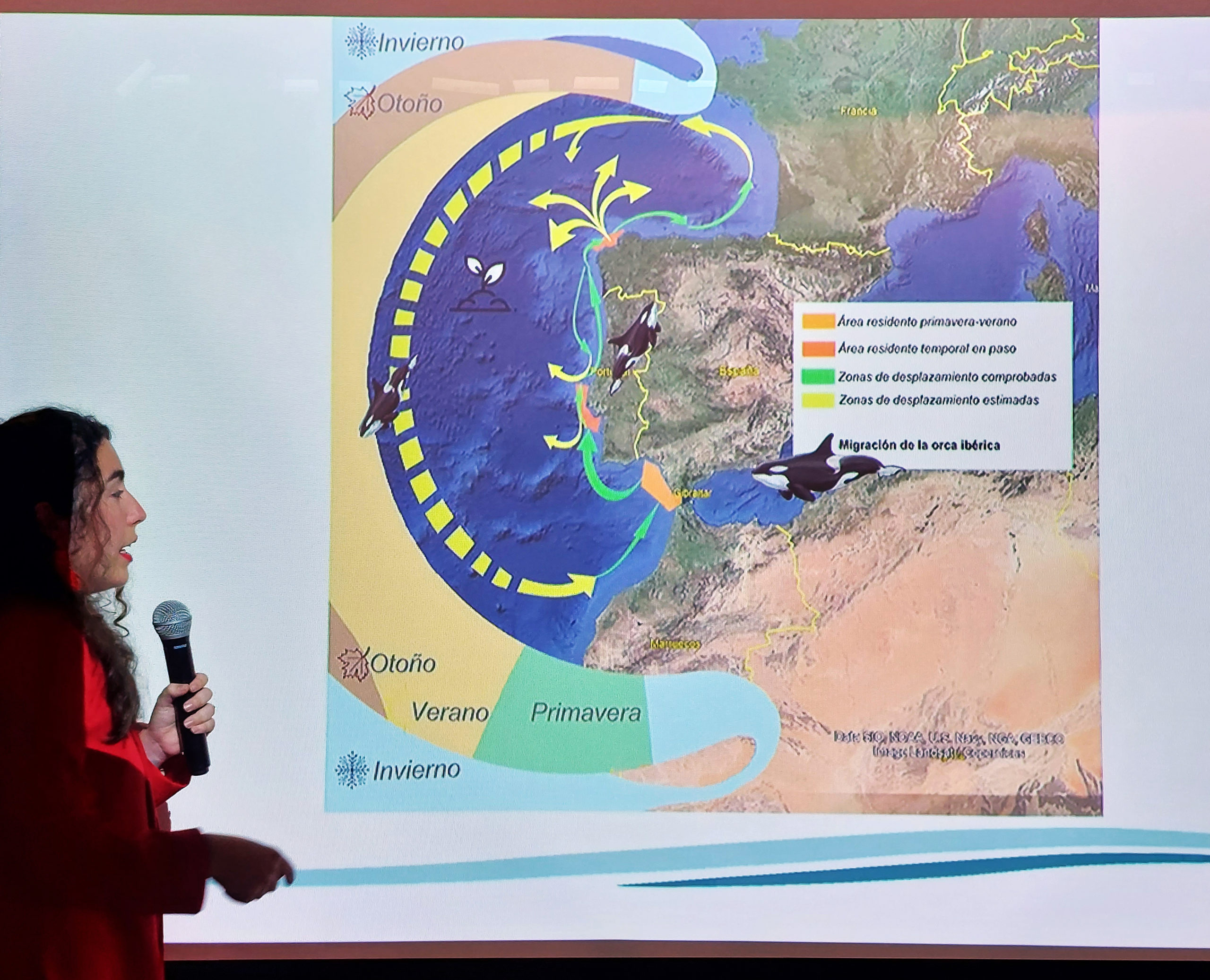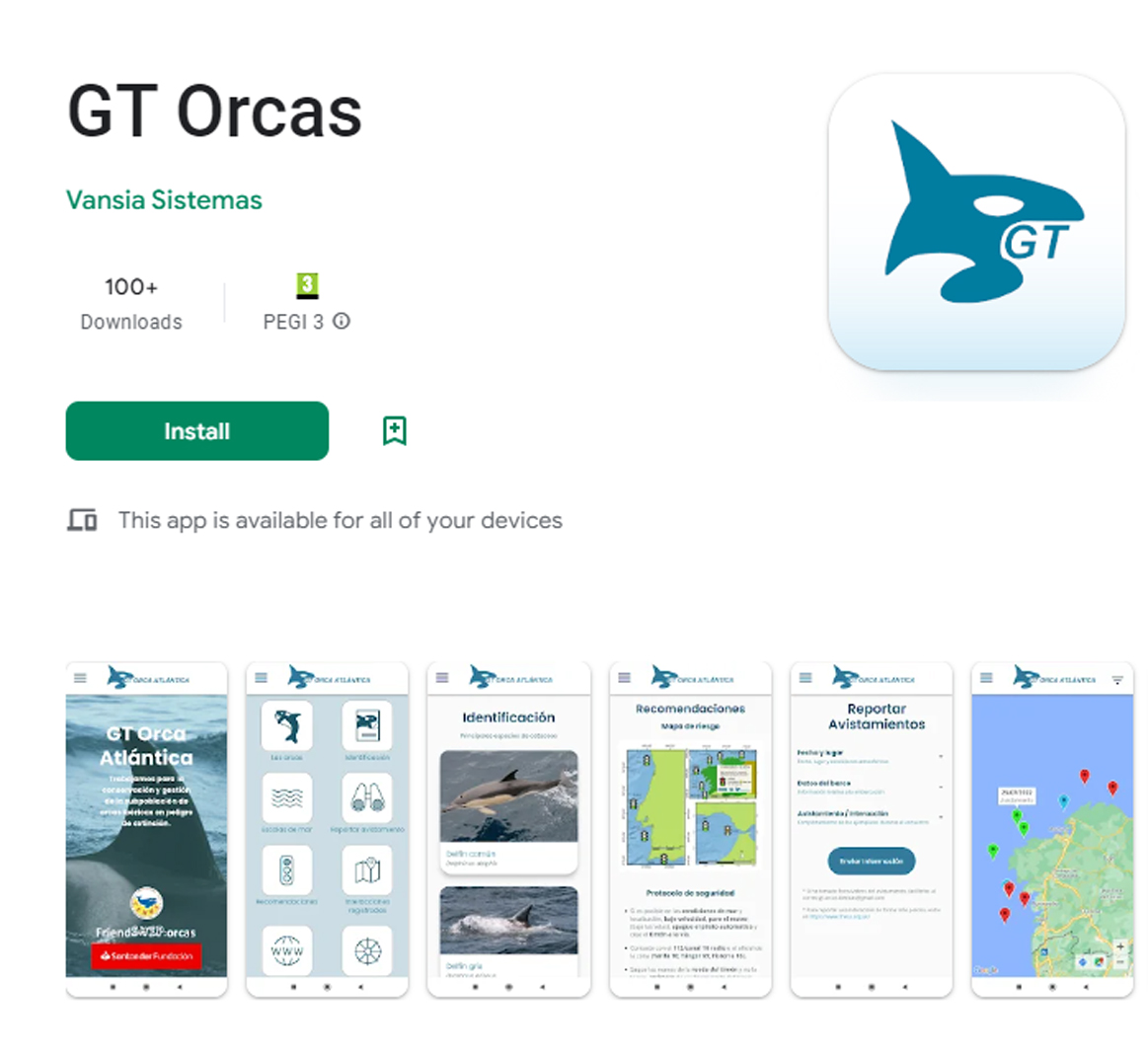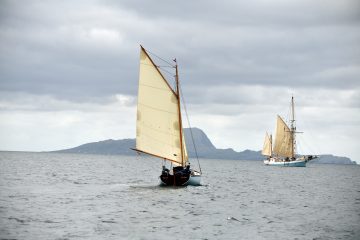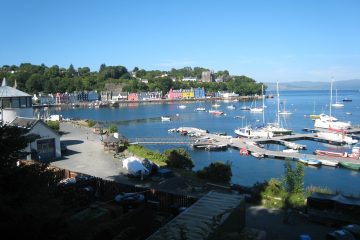by Daria Blackwell
Mónica González, Bióloga Marina de CEMMA – Coordinator for the Study of Marine Mammals, gave a talk at the Irish Sailing Cruising Conference at the Royal Cork Yacht Club in Crosshaven on the 11th of March 2023. She presented a great deal of information now available on the Orcas that have been interacting with sailboats in the past few years.

Ms. González explaining the annual migration
of the Iberian orcas.
CEMMA and Orca Iberica have identified 15 orcas, of the resident population of 35 remaining animals, that are taking part in the interactions. Monohull sailboats were involved in 80% of reported incidents. It appears that the interactions, particularly with spade and double-spade rudders (72%), are a learned behaviour, being taught by the mothers to their offspring.
They have postulated one of two reasons for this behaviour:
1 – Young animals have learned that it’s fun to interact with the rudders and have been making a game with ‘particularly attractive’ rudders.
2 – Adults have responded aversively to an injury or other negative moment associated with the presence of the sailboats, such as correlation with lower abundance of tuna, the primary food source for this population of orcas.
The behaviour follows a repeated pattern, wherein the orca circles the boat to look at the rudder. If it really ‘likes’ the rudder, it blows out a strong raft of bubbles. After this, it dives and pushes the rudder to spin the boat. If the boat stops moving, the interaction typically lasts less than 10 minutes. Continuing to move keeps the interest of the animals, which continue to interact and may actually call in their friends to take part. This may result in destruction of the rudder and incapacitation of the boat.
The key protective measure they have identified is that stopping the boat, so it is motionless in the water. This reduces the length and severity of interactions. They have observed that the orcas are attracted to the prop wash of boats and that they often preen in the prop wash with their faces in the stream. Shutting off the engine and all electronics that produce in-water sounds helps reduce the length and severity of interactions. The majority of interactions occurred during the day, so night-time transits, farther offshore, may be more prudent.
Mónica pleaded with the sailing community to help provide as much information about interactions with orcas as possible. A new app is available (GT Orcas in iOS and Android, with optional English) that may make it easier to report interactions and prompts for the types of information that is most valuable, including:
Photos of the dorsal fin.
How and when the animals were first spotted?
How long the interaction lasted?
How many were involved?
Details about their boat, including rudder types and bottom paint colour.
What the mariners did in response to the interaction?
What was the outcome?

You can also report any interactions to the CA who have established a database of reports. https://www.theca.org.uk/orcas
For more information, visit:
https://es.oraiberica.org/
https://www.facebook.com/OrcaIberica/
https://www.instagram.com/orca_iberica/
https://twitter.com/Orca_Iberica


